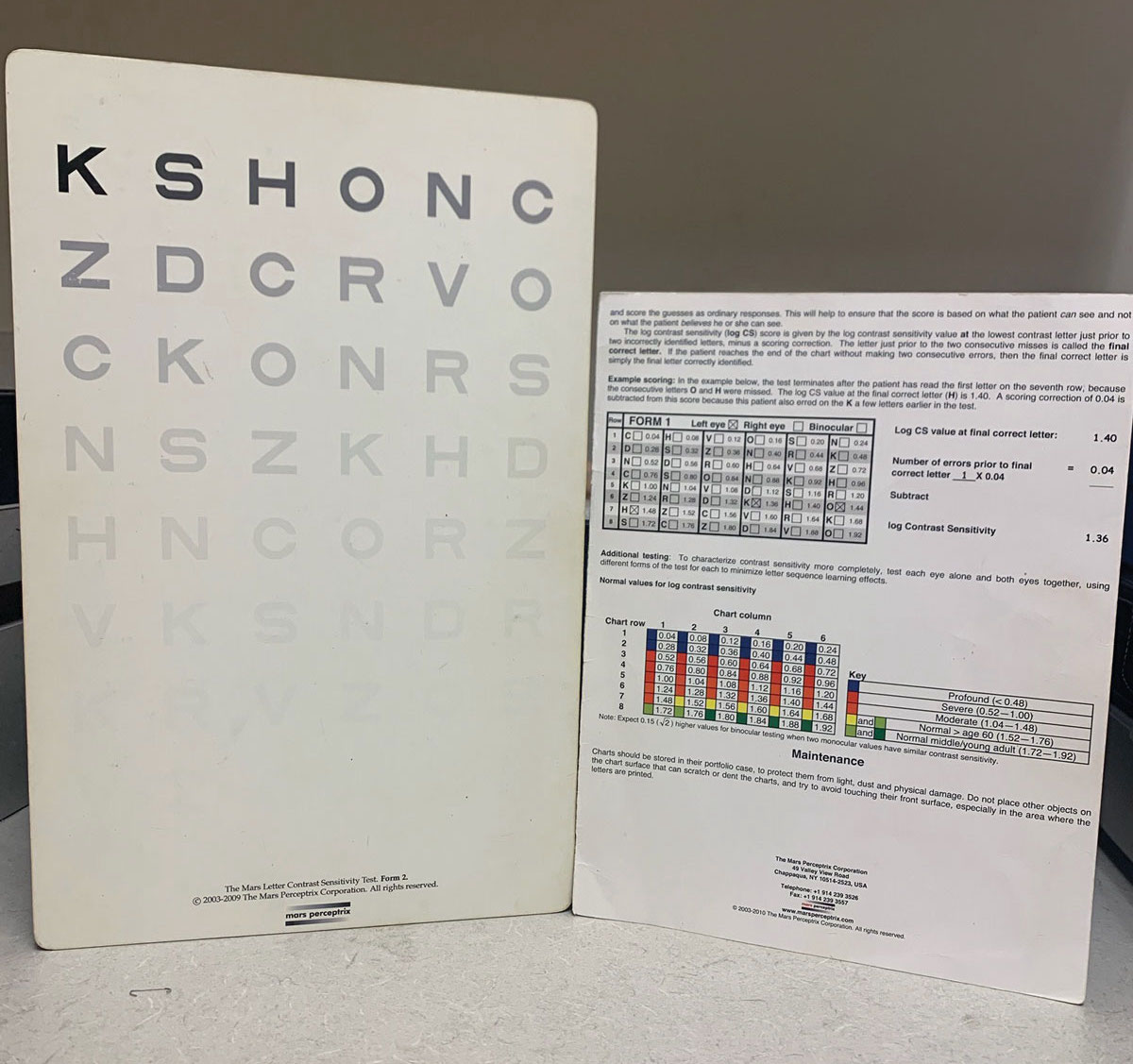 |
| Assessing both monocular and binocular functions makes for a more accurate measurement. Photo: Bisant A. Labib, OD. Click image to enlarge. |
Optometrists understand binocular summation as the improved visual performance that occurs when both eyes work in tandem. Little is known, however, about the mechanism underlying binocular contrast summation in patients with common eye diseases who often exhibit binocularly asymmetric vision loss and structural changes along the visual pathway. Looking into this, researchers recently found that cortical binocular contrast summation appears to be preserved despite eye diseases that can affect the two eyes differently.
Their study included 1,035 patients with normal ocular health, cataract, age-related macular degeneration, glaucoma and retinitis pigmentosa. Monocular and binocular contrast sensitivity were measured by the Pelli-Robson contrast sensitivity chart. Interocular ratio was quantified as the ratio between the poorer and better eye contrast sensitivity. Binocular summation ratio (BSR) was quantified as the ratio between binocular and better eye contrast sensitivity.
All groups showed statistically significant binocular summation, with the BSR ranging from averages of 1.25 in the glaucoma group to 1.31 in the normal vision group. There was no significant group difference in the BSR, after accounting for interocular ratio. By fitting a binocular summation model to the contrast sensitivity data, the team noted that the same binocular summation rule applied across the five groups.
“This finding supports the importance of assessing both monocular and binocular functions, rather than relying on a monocular assessment in the better eye as a potentially inaccurate surrogate measure,” the study authors concluded.
Xiong YZ, Liu R, Kwon M, et al. A unified rule for binocular contrast summation applies to normal vision and common eye diseases. Invest Ophthalmol Vis Sci. October 4, 2021. [Epub ahead of print]. |

